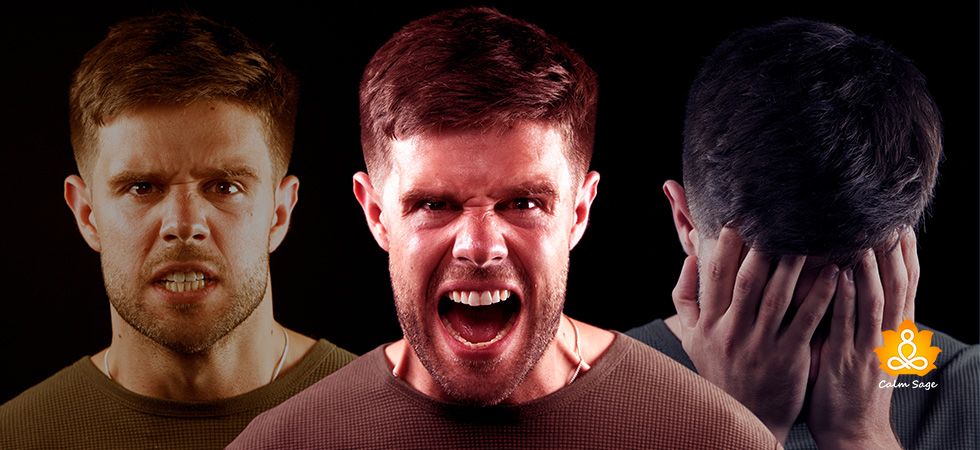What Is Toxic Masculinity? Addressing The Stigma, Understanding The Effects & How To Deal With It

In recent years, I’ve frequently heard the term “Toxic Masculinity” floating around in my peers and friends but at the same time, I’ve seen the misinterpretation of this term as well.
Many people may use “‘toxic masculinity” to describe someone’s behavior but they might not even know the implications of what toxic masculinity does to a person. Where some people – regardless of their gender and roles, have embraced the concept of feminism, some people have found it difficult to move past the archaic thinking and antiquated gender roles.
Addressing the stigma and changing others’ beliefs may take time but before we take the step and challenge the stigma, we need to understand what toxic masculinity is, why it exists, and what impact toxic masculinity is having on society.
What Is Toxic Masculinity?

There is not an exact definition of toxic masculinity but this term can be described as a set of behaviors that are culturally and traditionally connected to archaic gender roles. In other words, toxic masculinity can be described as exaggerated masculine traits that society and cultures accept and glorify.
This concept of masculinity places a lot of emphasis on the definition of “manliness” based on strength, dominance, lack of emotions, etc. According to the concept of toxic masculinity, if a man does not show enough “masculinity”, he is not deserving of being called a “real man”.
An everyday example of toxic masculinity can be the phrase, “boys don’t cry”. This expression speaks that a man is weak for showing a weakness such as expressing their emotions. This teaches men to bottle up emotions rather than helping them explore the reasons and express their feelings freely.
Traits Of Toxic Masculinity

Toxic masculinity traits can include showing:
- Mental and physical strength
- Aggression
- Lack of emotions
- Discrimination against people who don’t display signs of “manliness”
- Transphobia or homophobia
- Self-sufficiency
- Emotional insensitivity
Toxic masculinity can also be very subtle and hard to recognize. Some other everyday examples of toxic masculinity include saying:
“That’s what girls do, not boys.”
“Man up!”
“Boys will be boys”
The concept of toxic masculinity may span from cultures to religions to classes but even within a single culture or religion, the “masculine” ideals may vary.
Impact Of Toxic Masculinity On Health

The effects of toxic masculinity can be potentially harmful to the individual, the people around them, and society as a whole.
One of the implications of toxic masculinity is that asking for help – of any kind – is perceived as a show of weakness. When someone is subjected to toxic masculinity, they may have poor mental and emotional well-being.
Toxic masculinity affects the mental health of a man who doesn’t fit the archaic mold of a “real man” Men forced to adhere to these archaic traits may experience struggles, such as:
-
- Depression
- Negative Body image
- Poor social health
- Substance abuse
- Addiction
- Stress
Moreover, as feeling emotional or talking about emotions go against these archaic values so there is the added risk that men struggling with mental health issues may not seek professional help or share their emotions with their loved ones.
How To Address & Deal With Toxic Masculinity?

It is difficult to address toxic masculinity but there are ways you can change your beliefs and challenge the stigma surrounding masculinity.
Here’s what you can do:
1. Question Your Understanding Of Masculinity
Try to think about what you consider masculine and then question where those beliefs or values came from. Ask yourself, have you ever denied yourself something because others considered them feminine? Or have you judged others for not being “manly”?
2. Acknowledge Your Beliefs
After you’ve done questioning your beliefs, acknowledge that the implications of toxic masculinity are widespread and can affect anyone. Rather than feeling shameful, feel alright to acknowledge your beliefs and slowly address what you need to change. At this point, you can also help educate others about their negative beliefs too.
3. Hold Tough Yet Patient Conversations
It can be difficult to push back on beliefs that have been considered acceptable for centuries but how will things change if no one will instigate change?
An example, when you see or hear a friend comment on not seeing a professional even though they are struggling, you can ask them why and have a patient conversation with them and help them challenge their behavior.
Writer’s Thoughts
If you’re struggling with the negative effects of toxic masculinity, then you can reach out to a professional and ask for help in understanding the source of your beliefs. Asking for help from a professional is okay and nothing to be ashamed of.
When you take the step, others will too, and slowly the stigma with toxic masculinity will fade. Regardless of your gender identity and expression, you can be a victim or even a perpetrator of toxic masculinity.
Identifying and acknowledging your beliefs is the first step towards change. Whatever your gender identity, be true to who you are and challenge the roles you’re uncomfortable in.
You can also write to us at info@calmsage.com to express your views on toxic masculinity. I hope with this blog, you were able to understand the impact of toxic masculinity and how you can deal with it.
Found this article helpful? Let us know in the comments below!
Take Care!




















